Several years ago I took a marvelous close-up image of a great egret in full breeding colors during a trip to the Everglades. This egret was almost tame and allowed me to get really close, so I was able to get a genuine portrait of him. You know the routine—fine detail, perfect exposure, impeccable focus, excellent framing, and then you notice that background!
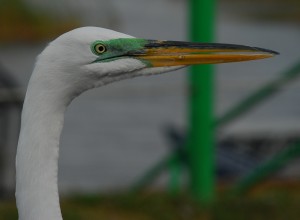 I’m almost ashamed to show you what I brought home, but to make my point I must. The shot did indeed have all the marvelous characteristics I named above, but my excitement with getting the shot generated tunnel vision so that I didn’t notice the bright green railing and the water and boats beyond until it was too late and I was already far away.
I’m almost ashamed to show you what I brought home, but to make my point I must. The shot did indeed have all the marvelous characteristics I named above, but my excitement with getting the shot generated tunnel vision so that I didn’t notice the bright green railing and the water and boats beyond until it was too late and I was already far away.
In the years since that bright green railing slammed me back to reality I have learned to look for distracting elements in the photo before clicking the shutter, but I don’t always have time or the freedom of movement to get a shot with a perfect background. Despite warnings to perform a “border patrol” or to “count the corners” as part of the process of composing the image, sometimes you just have to take what you can get. In those cases you have only one option, which is to try to clean up the background later in post-processing.
Adobe Photoshop offers the opportunity to replace entire backgrounds if one has the skill and perseverance to work with layers, but this is a skill which requires much patience and lots of practice. I’ve tried it, but I’ll be honest—I gave up many times on this very photograph. My hand with a mouse isn’t nearly steady enough to enable me to carve out the egret from this photo, and the margins always looked crude and artificial when I did try it. I eventually bought a Wacom tablet to attempt finer control of the selection brush, but that method didn’t work for me either. I found that I tried to use the Wacom pen like I’ve always used a mouse, and I never did unlearn those movements. Long story short, I sold the Wacom tablet for about half what I paid for it, and I was glad to be rid of it.
But now I’ve found a solution which even I can make work pretty well. In July I went to a workshop in Beaufort, SC sponsored by the Photography Club of Beaufort and taught by Kate Silvia of Charleston. Kate demonstrated the Google Nik Collection and a few of the programs in the Topaz suite, and I was particularly taken with the capabilities of Topaz Impressions which I wrote about in my previous blog entry. She also demonstrated the capabilities of Topaz Remask, and I decided this week that I should give Remask another try. Remask 5 is a 64-bit program which functions just like Remask 4 as a plug-in for Adobe Photoshop, Adobe Lightroom, and Adobe Photoshop Elements. The big news is that Remask 5 now also functions as a stand-alone program so that it can be used by photographers who don’t have either of those host programs.
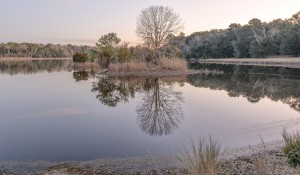 I began a 30-day trial of Topaz Remask 5 to see what I could do with it. After viewing a short You-Tube video I felt that I would be able to use the program, so I began the process. My first trial naturally involved the egret photo above, and I picked a background image which I had shot at Donnelly Wildlife Management Area in February.
I began a 30-day trial of Topaz Remask 5 to see what I could do with it. After viewing a short You-Tube video I felt that I would be able to use the program, so I began the process. My first trial naturally involved the egret photo above, and I picked a background image which I had shot at Donnelly Wildlife Management Area in February.
The background is an ordinary image without distinction, showing one of the small islands along the access road. When I shot this image I was preparing to get closer to shoot some black-crested night herons that were roosting on the island, but I didn’t get any usable photos from that effort. I kept the image, though, because it was sharp and had a tinge of the sunrise color washing across it. This became my background for the new egret image.
In a surprisingly short time and with very little effort I was able to remove the distracting background from the original egret photo and replace it with the Donnelly WMA image. I shifted the Donnelly image around, trying different orientations, and eventually settled on this combination for the final image. I think it’s a pretty good portrait!
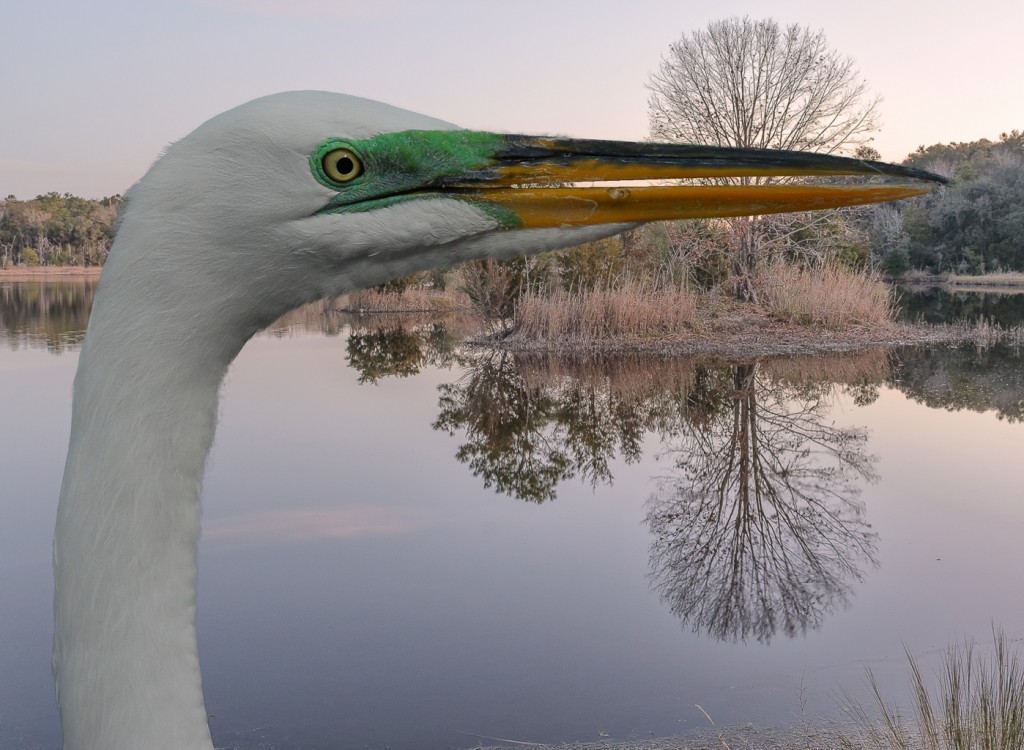
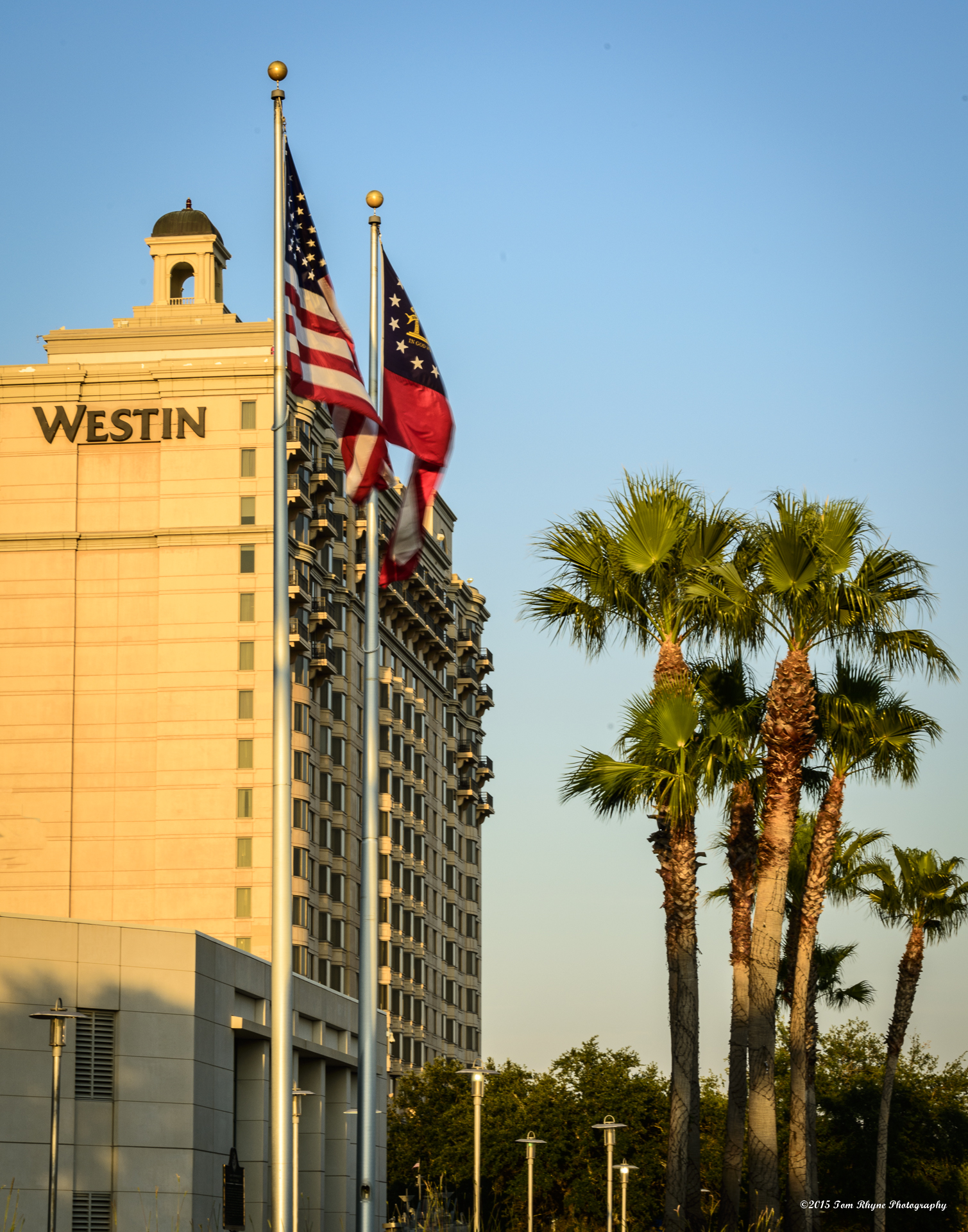 I joined some friends to photograph the Savannah waterfront at sunset a few days ago and found that my favorite shots actually came after sunset. We arrived at the Hutchinson Island location of the Westin Hotel and Savannah Convention Center shortly before sunset. This location provides free parking across the river from the waterfront night life of Savannah, and it’s only a free ferry ride away from joining in on the festivities. It also gives an unobstructed view of the entire waterfront area and the Talmadge Bridge upriver, and ships going to and from the Port of Savannah pass by in clear view. The only negative, from a photographer’s point of view, might be the mosquitoes and other no-see-ums along the waterfront. Bug spray is required!
I joined some friends to photograph the Savannah waterfront at sunset a few days ago and found that my favorite shots actually came after sunset. We arrived at the Hutchinson Island location of the Westin Hotel and Savannah Convention Center shortly before sunset. This location provides free parking across the river from the waterfront night life of Savannah, and it’s only a free ferry ride away from joining in on the festivities. It also gives an unobstructed view of the entire waterfront area and the Talmadge Bridge upriver, and ships going to and from the Port of Savannah pass by in clear view. The only negative, from a photographer’s point of view, might be the mosquitoes and other no-see-ums along the waterfront. Bug spray is required!
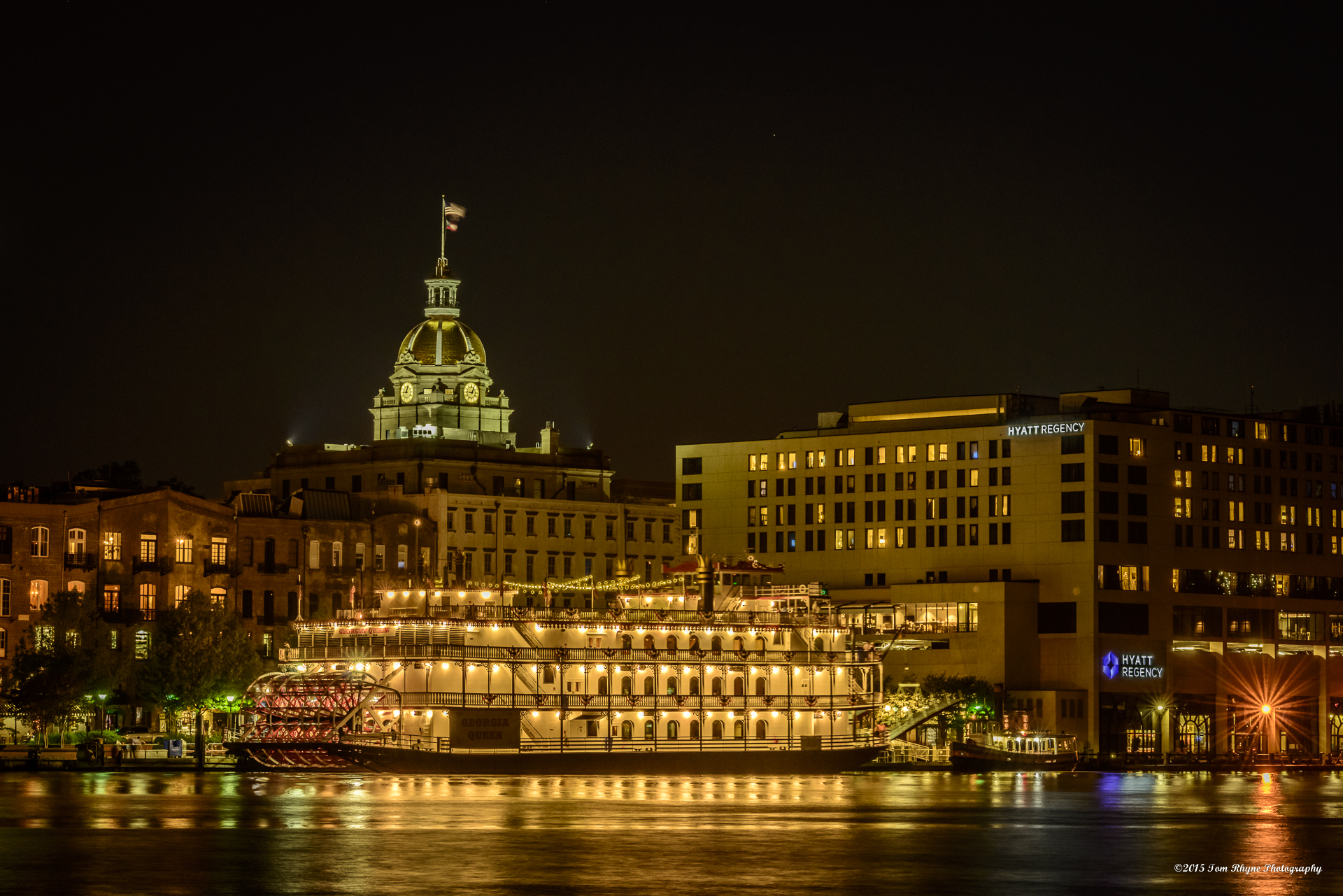


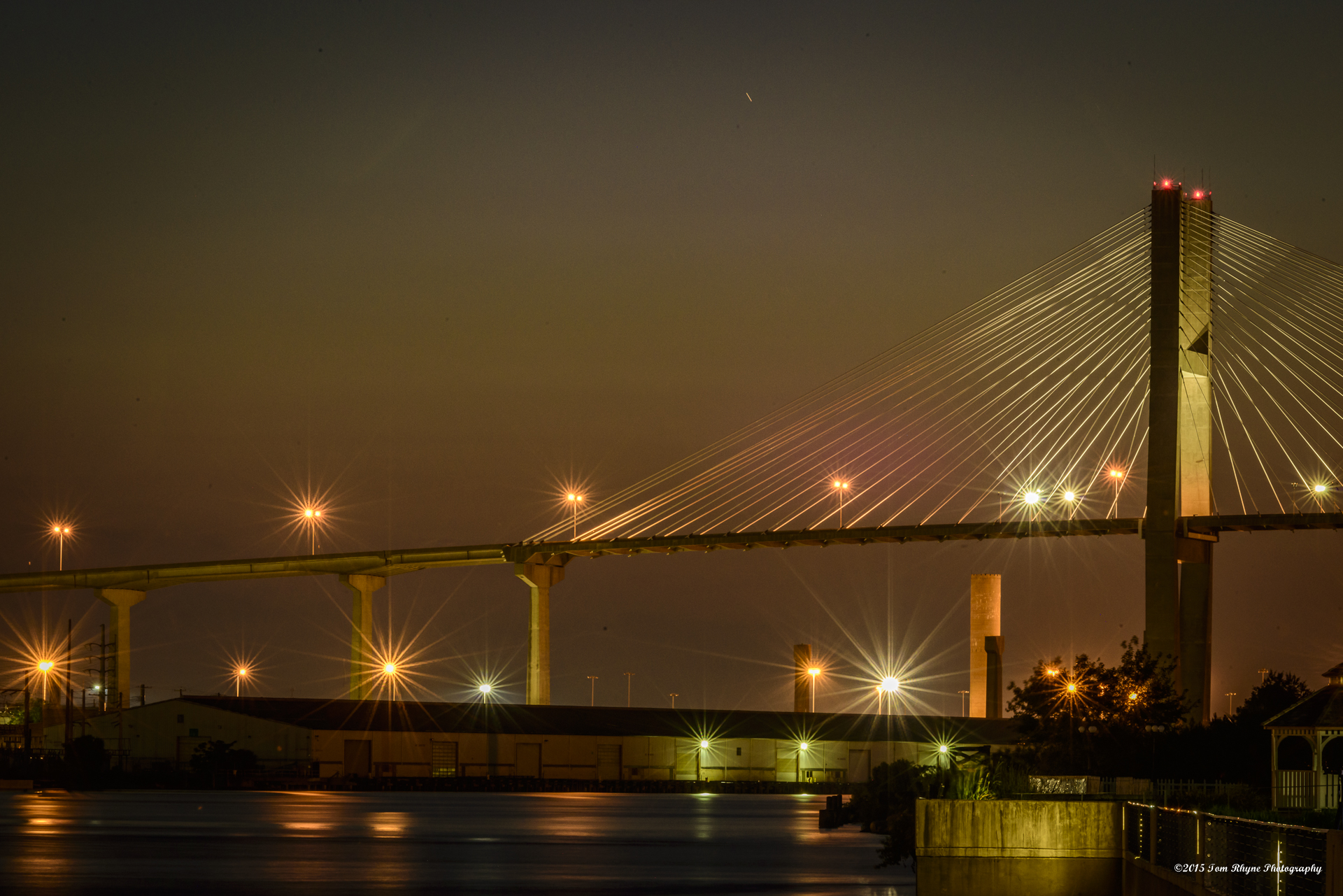
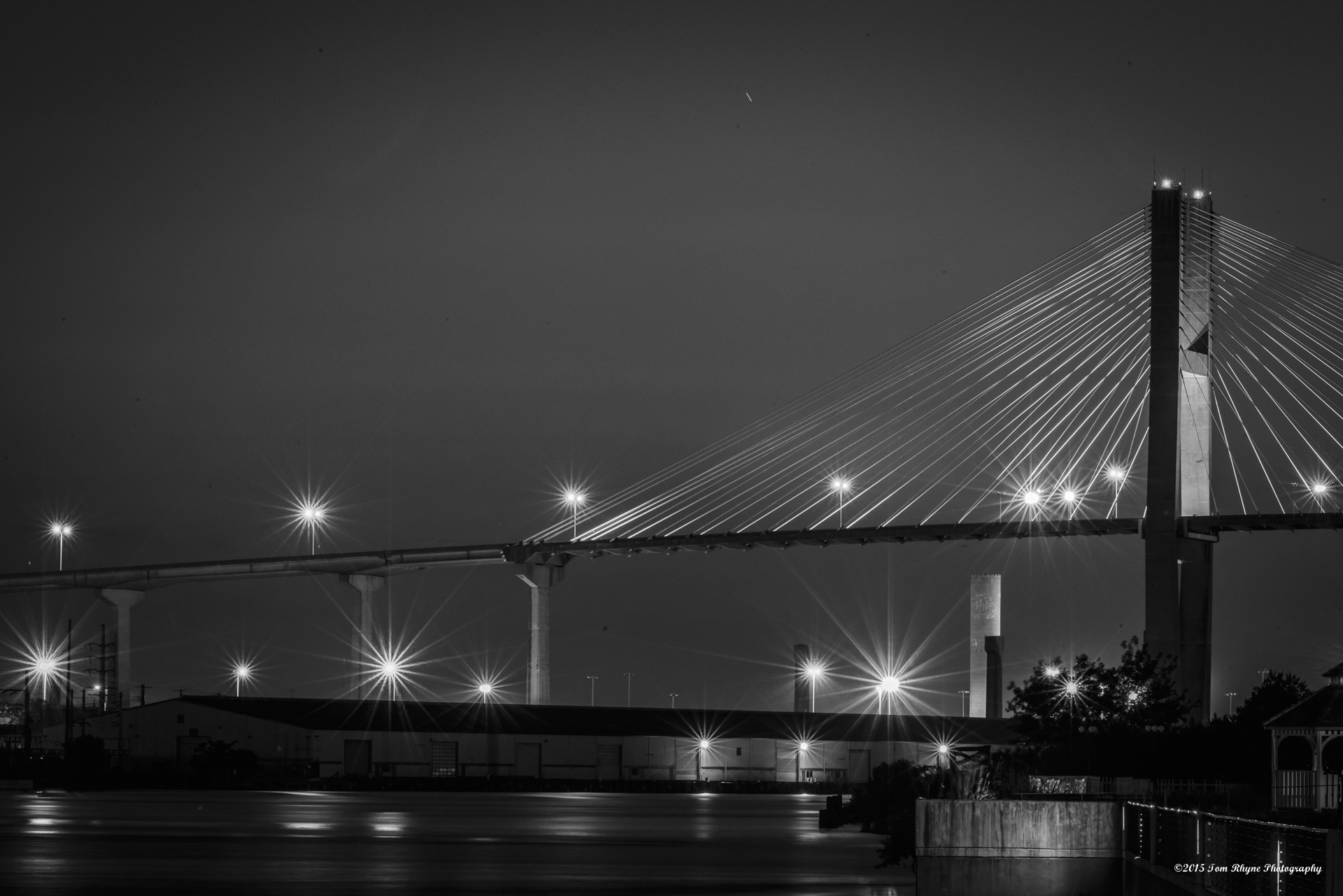
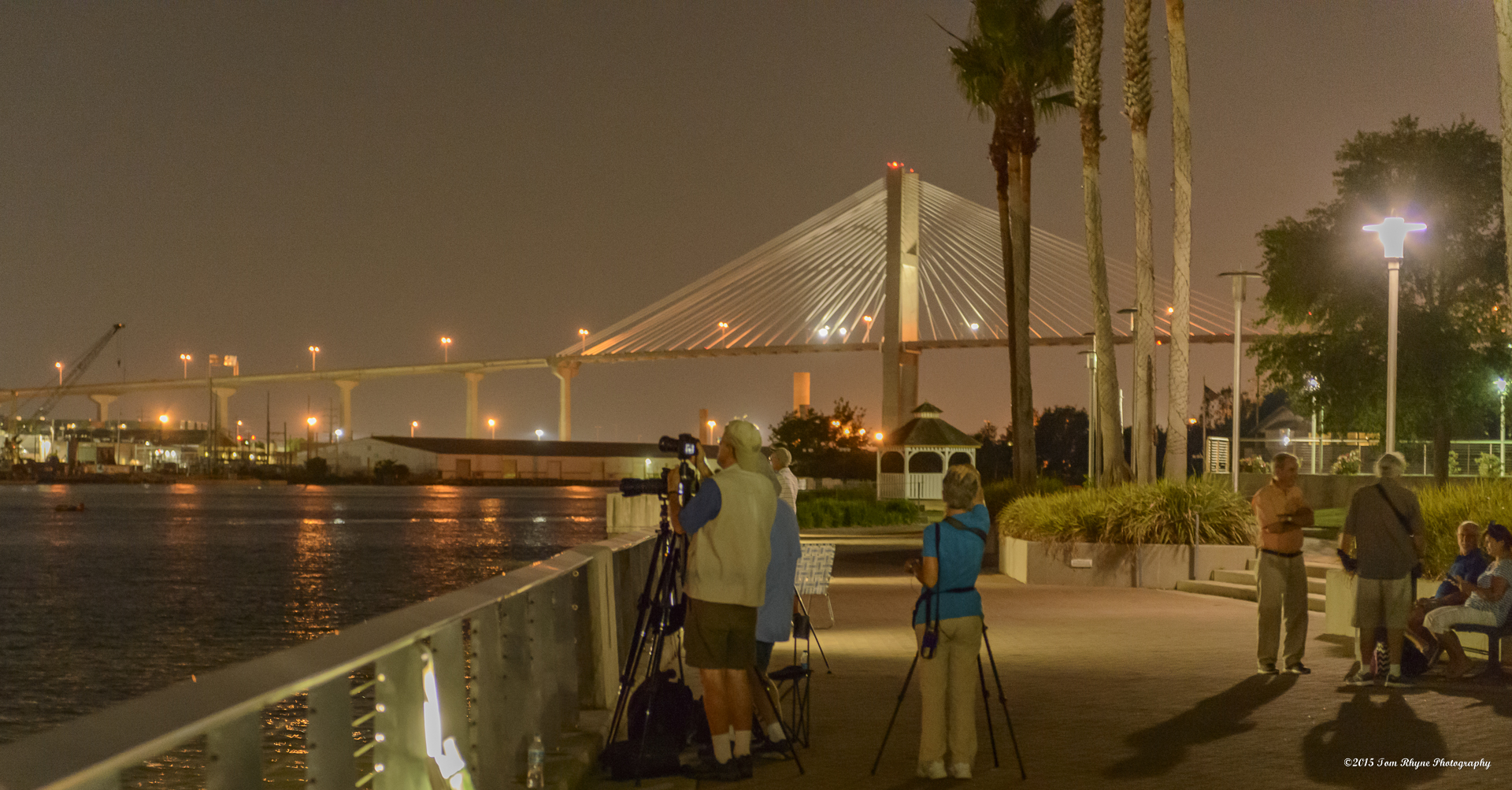
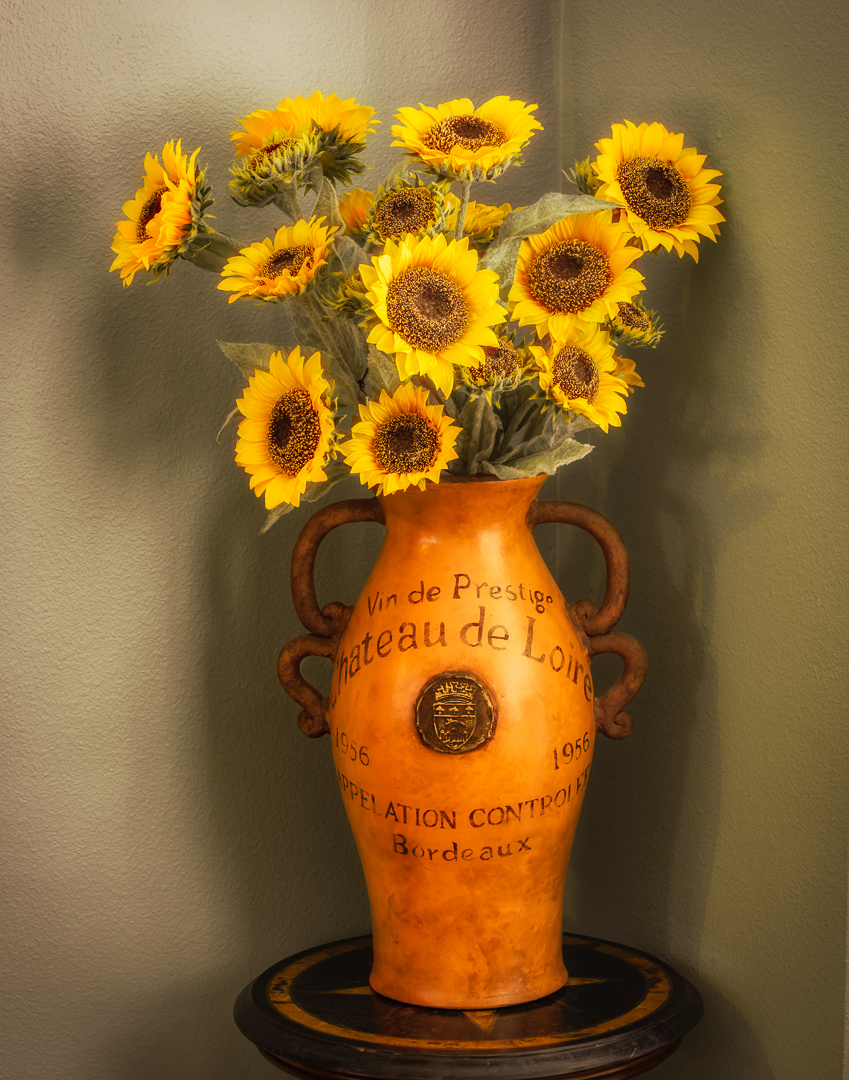
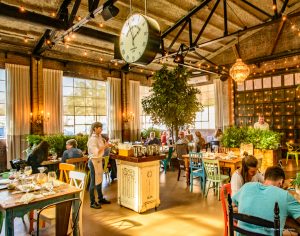
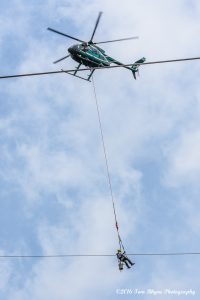
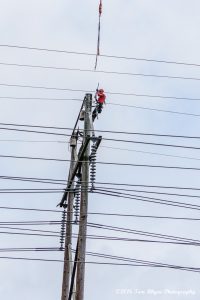
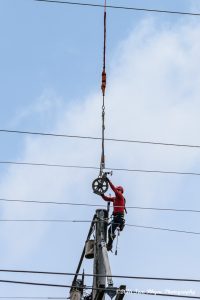
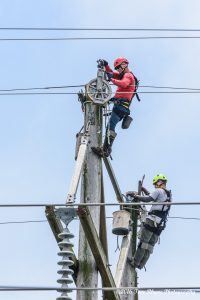
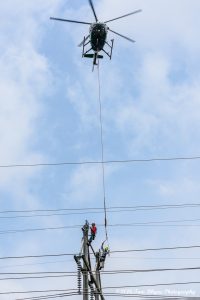
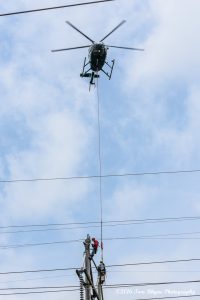
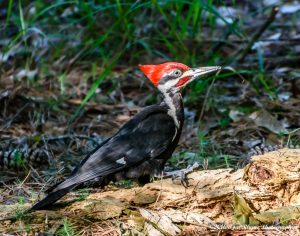
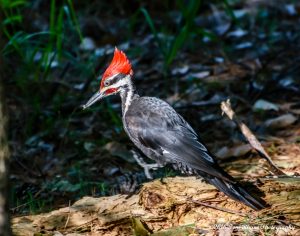
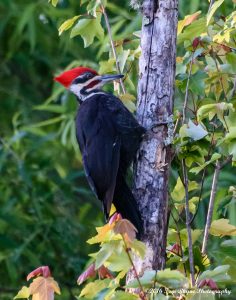
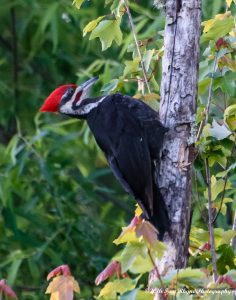
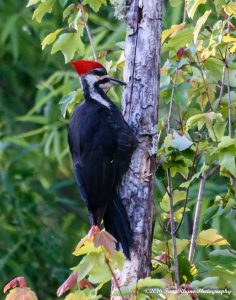
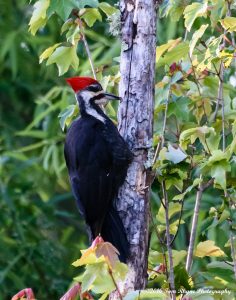
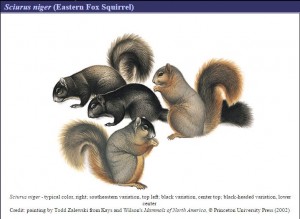
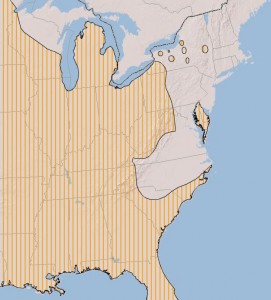
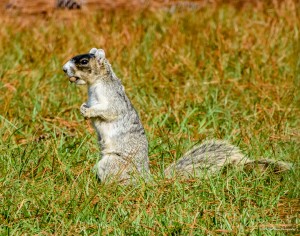
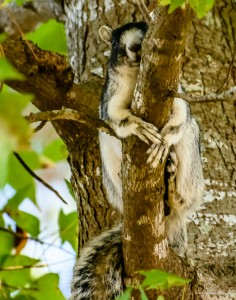
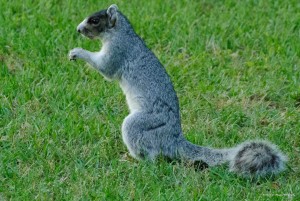
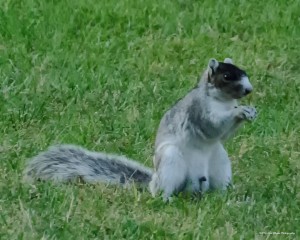
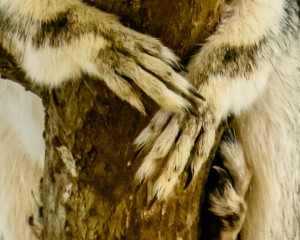



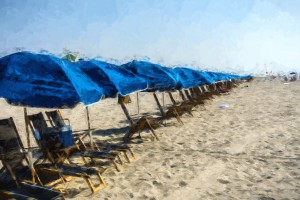
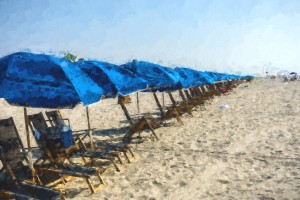
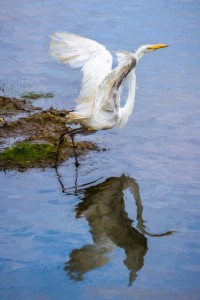
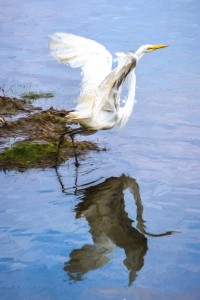
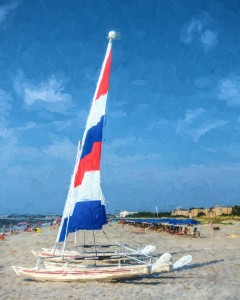
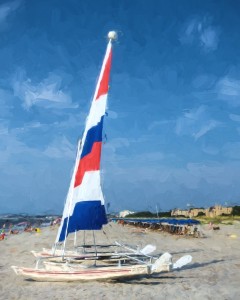
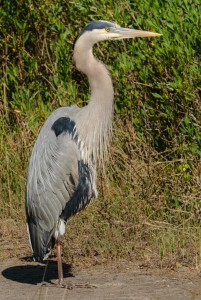
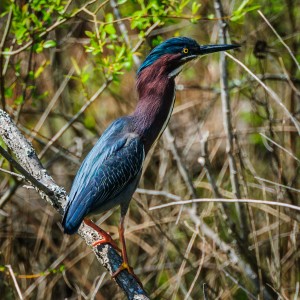
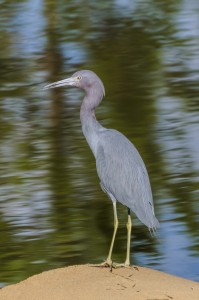
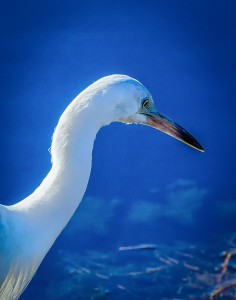
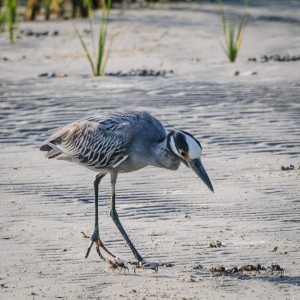
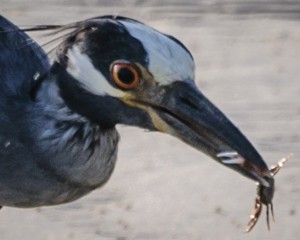
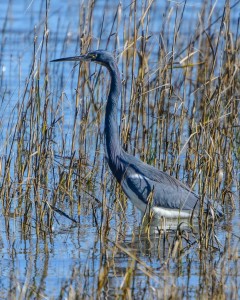
Winter Solstice 2017
The shortest day of the year! It’s dreary Winter weather, having been cold last week, then some rain, several days of fog, and now just gray and damp. Outdoor activities are at a minimum even though the temperature is fairly pleasant.
Both cars have developed issues with tire pressures, perhaps a leak but maybe just imbalance due to the change in the weather. Those tire pressure valves that communicate with the car computer to identify one (or more) having a rogue pressure seem at first to be a good idea, but my experience has been that this is a great bother. My 2010 Camry has notified me perhaps half a dozen times of out-of-range tire pressures, always at the most inopportune times, and almost always it has been the result of nothing more than the change in the weather.
I’ve given up trying to balance the tire pressures on my own, so I surrender to the local tire store to check the tires for punctures and slow leaks as they normalize the pressures all around, including the spare. The Avalon, with its full-sized spare tire, requires all tires to be in the same pressure range but the Camry, with its high-pressure (70 psi) emergency-use-only spare, has different pressures so I’m really confused about how to normalize those pressures.
On days like this it’s best to try to get some errands done and dive into some indoor projects such as my photography work. I’ve printed her favorite photo for Billie and I’ve entered a macro photo into the expert commentary line-up for the January Macro Photo Club Newsletter, so now I’ll have to look for something else to occupy my time. Perhaps I’ll spend some time learning more about the alternatives to Lightroom for processing my photo files. This could take hours, so by the time raise my head again the sun might have come out.